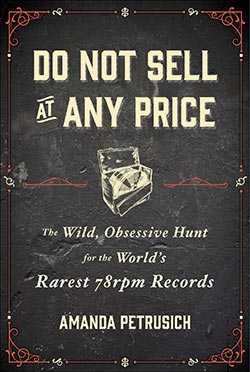

Do Not Sell At Any Price: The Wild Obsessive Hunt for the World’s Rarest 78RPM Records
By Amanda Petrusich. Scribner, $18.95.
Do Not Sell At Any Price is an engaging, well-paced peek into the world of buying, selling and coveting rare 78-RPM records. (SPOILER ALERT: Did you know one of the world’s leading dealers of 78s lives just down the road from Eugene in Grants Pass?)
The 78 was a short-lived format from the dawn of the recording industry. Some audiophile purists — such as belovedly eccentric cartoonist Robert Crumb and famous music anthologist Harry Smith — contend the 78 is the very best format of all. Country blues recordings on 78 from the early part of the 20th century are some of the most rare, sought-after and valuable items in the history of recorded sound.
Alongside plenty of music-nerd-a-philia and Antiques Roadshow-style fetishism (Petrusich dives to the bottom of the Milwaukie River in search of fabled 78 masters), Do Not Sell examines the psyche of the collector and the allure of objects in our digital and disposable modern world.
Petrusich writes, “‘I have a recurring dream about finding Skip James’s “Devil Got My Woman,”’ Heneghan said, leaning in, his voice low and solemn.” It’s this intensity that Petrusich (herself an obvious music lover) seeks to understand.
In a world where music can be (virtually) free, here’s a chance to travel back to a time when recorded sound was king and meet a motley bunch of big-hearted and obsessive romantics, hell-bent on preserving what they can before it’s too late. — William Kennedy
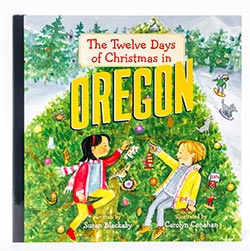
The Twelve Days of Christmas in Oregon
By Susan Blackaby. Sterling Children’s Books, $12.95.
Having grown up in southern Oregon, I’m more attached to Crater Lake and the Oregon Caves than Mt. Hood and the Columbia Gorge. To each their own. When I picked up The Twelve Days of Christmas in Oregon, I had one fear: that northern Oregon would dominate the book, leaving poor children thinking Oregon consists only of Portland and its surrounding areas.
To my relief, Twelve Days skillfully explores all of our lovely state, from east to west and north to south.
The picture book, with colorful illustrations by Carolyn Conahan, tells its story through letters from Damon, who is visiting family in Oregon and writing to his parents about all the sights and sounds he’s experiencing. Among other locales, Damon visits Multnomah Falls, Malheur National Wildlife Refuge in far Eastern Oregon, Mount Bachelor near Bend and Sea Lion Caves along the coast. And, of course, it’s Christmas-themed, so each stop represents another verse to the song: four thundereggs (Oregon’s state rock), seven gray wolves howling, 10 Portland food carts, etc.
The book is adorable, and sure to delight young Oregonians everywhere. — Amy Schneider
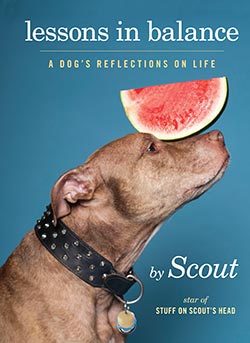
Lessons in Balance:
A Dog’s Reflections on Life
by Scout (star of Stuff on Scout’s Head). Running Press, $13.95.
I’m a sucker for a dog book, but Lessons in Balance is not just a dog book, it’s pictures of a patient, soulful pitbull balancing things on his head accompanied by pithy wisdom. Scout takes balancing things on his square, blocky head very seriously, crossing his brown eyes in concentration. “Nothing else matters to him at that moment; his concentration is unbreakable,” his dog mom Jen Gillen writes. It’s a perfect little book for the owner of a rescue dog (as Scout is) or any dog lover. — Camilla Mortensen
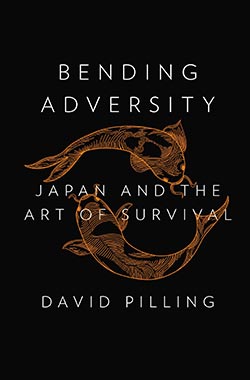
Bending Adversity:
Japan and the Art of Survival
By David Pilling. Penguin Press $29.95.
Japan remains a mysterious place to many, despite a growing acquaintance with its culture and an ever-growing list of appropriated products, food, literature, movies and practices like Tabata and, of course, martial arts forms. This books feeds on and is fed by this growing, more-or-less, mainstream passion for all things Japanese.
The book recites many of the cliché anecdotes regarding Japan’s culture and history as most books written on the topic by a Westerner will, but Pilling toys with the anathema notion that nations cannot be quickly defined and understood by noting their GDP, registering their weapons cache or analyzing their birth rates.
He certainly recites standard Western-style economic dictates and does some dithering in acknowledging the opaque nature of economic oracular activity, but Pilling retains an honorable respect for Japan, keeping his eyes open to the unpredictability of historical motion, respecting the near impossibility of easily defining a populous nation by trying to draw simple, straight lines through its multifarious nature.
By book’s end he’s focused mostly on recent Japanese politics and history. His respect for complexity makes this an interesting book, and I will hazard the claim that this is a worthwhile read for anyone interested in Japan. — Paul Quillen
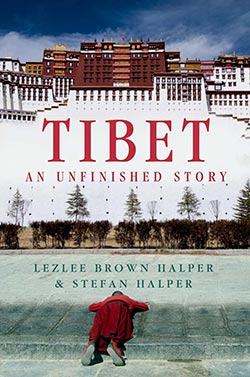
Tibet: An Unfinished Story
By Lezlee Brown Halper & Stefan Halper. Oxford University Press, $29.95.
This book focuses on the political maneuverings of China and surrounding great powers after World War II. At a quick 254 pages, it does a zippy job of presenting how the West first gained interest in Tibet, with the U.S. eventually using it (however briefly) as a pawn in the Cold War games with China, India and Pakistan.
An inclusion I found most fascinating was secret CIA operations training Tibetans to organize resistance, which only lasted while China was deemed a threat, before Kissinger, Nixon and Bush decided to let down the golden-plastic, capitalist curtain and meet with Mao, accepting the PRC as an official political entity.
The book speeds to modern day where the 2008 riots are quickly glossed over, ending with the current count of self-immolations by young Tibetan monks in protest.
This is a book for those who like reading detailed history over popular non-fiction. There is no spoon-fed moral, as much as an illustration of how Tibet has remained an occasional focal point in the shifting, hot-lava floor of international politics. It juxtaposes the fetishization of an exotic culture against the misfortune of being geographically and strategically bound between cultures uninterested in or incapable of living peacefully. — Paul Quillen
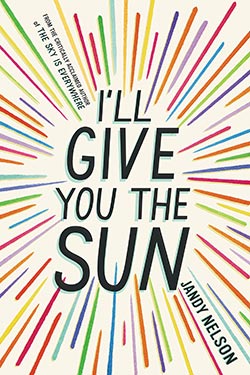
I’ll Give You the Sun
by Jandy Nelson. Dial Books, $17.99.
Jandy Nelson’s I’ll Give You the Sun tells the story of Noah and Jude, artistic twins who are as close as close can be. Until they’re not. And then they are again.
Stylistically written, Nelson’s YA novel switches back and forth between storylines, offering readers differing perspectives on one family’s tragic events. The early years, when the twins are 13, are Noah’s to tell. Socially awkward, and constantly drawing, Noah strives to win the affection of his art-critic mother by getting into the CSA, a highly selective fine-arts high school Mom wants both twins to attend. But three years later, much has changed: A car accident has taken their mother’s life, Noah has abandoned his art and is wrestling with his sexual identity, and the formerly wild-child Jude has become convinced her grandmother and mother are haunting her.
These later years are Jude’s to narrate, and as she seeks the mentorship of a renowned stone sculptor, Jude begins piecing together the real reasons she and Noah have drifted so far apart. While the novel’s multiple love stories (everyone seems to be falling helplessly in love with someone they shouldn’t be) are a bit heavy-handed and cliché, Nelson’s ability to authentically portray complex sibling relationships — as well as her ability to show how what we think we know is rarely how things actually are — makes I’ll Give You the Sun a colorful and memorable read. — Eliot Treichel